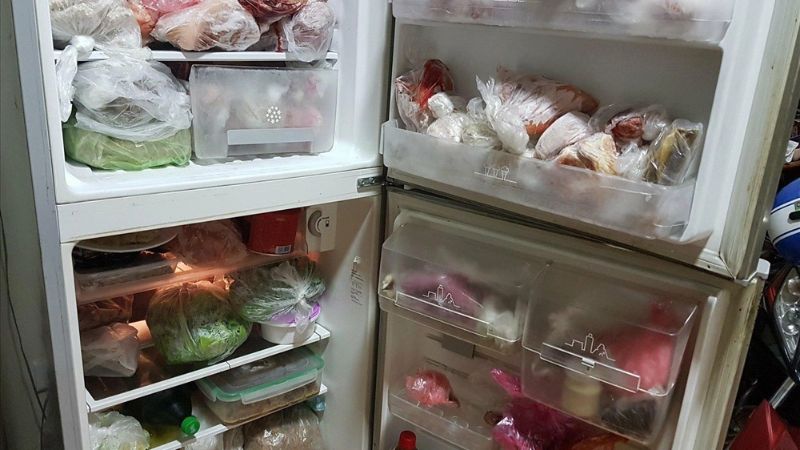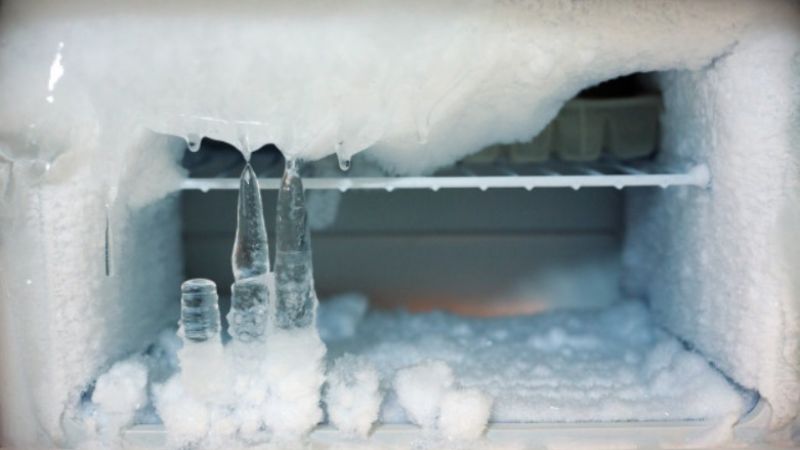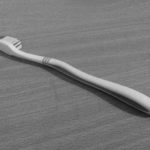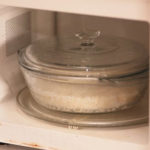Refrigerators are essential for keeping food fresh and storing perishables. However, improper use and cleaning practices can turn it into a breeding ground for bacteria. Let’s explore nine common mistakes people make when using their refrigerators, as identified by Bach Hoa XANH.
1. Mixing Raw and Cooked Food
Unwashed raw fruits, vegetables, meat, and seafood can harbor harmful bacteria, increasing the risk of food poisoning. These items often carry pesticides, dirt, and other contaminants from the market. Always separate raw and cooked food to prevent cross-contamination.
 Keep raw and cooked food separate.
Keep raw and cooked food separate.
2. Not Covering Leftovers
A common mistake is placing uncovered leftovers in the fridge. Doing so allows bacteria to enter and creates unpleasant odors. The cool temperature slows down bacterial growth but doesn’t kill it. Always cover leftovers tightly before placing them in the fridge.
 Always cover leftovers before placing them in the fridge.
Always cover leftovers before placing them in the fridge.
3. Not Washing Produce Before Refrigeration
Some believe that washing produce before refrigeration will cause it to spoil faster. However, fruits and vegetables can carry E. coli and other harmful bacteria. Always wash your produce with specialized cleaners or diluted water to remove contaminants before storing them in the fridge.
 Wash produce before refrigeration.
Wash produce before refrigeration.
4. Storing Fruits and Vegetables Together
Fruits and vegetables should be stored separately. They release gases that can cause spoilage in each other. Keep them in different compartments to maintain freshness and prevent premature rotting.
 Store fruits and vegetables separately.
Store fruits and vegetables separately.
5. Ignoring Frost Build-Up
Older refrigerators may develop frost over time. Regularly check and remove any frost build-up to maintain efficient airflow, save storage space, and reduce energy consumption.
 Don’t ignore frost build-up in your refrigerator.
Don’t ignore frost build-up in your refrigerator.
6. Neglecting Monthly Cleaning
Regular cleaning is crucial to maintaining a bacteria-free refrigerator and prolonging food freshness. Schedule a monthly deep clean, discard old food, and thoroughly wipe down compartments and shelves.
 Clean your refrigerator monthly.
Clean your refrigerator monthly.
7. Storing Eggs and Dairy in the Door
Eggs and dairy products have a short shelf life and require the coldest part of the fridge, which is usually not the door. The door is subject to frequent opening and closing, resulting in temperature fluctuations. Instead, store spices, dried goods, and other long-lasting items in the door.
 Store eggs and dairy in the main compartments, not the door.
Store eggs and dairy in the main compartments, not the door.
8. Storing Raw Meat Anywhere
Raw meat should be stored in a dedicated compartment, separate from other foods, to prevent bacterial contamination. Typically, the lowest and coldest compartments are best for storing raw meat, seafood, and other perishables.
 Store raw meat in a dedicated compartment.
Store raw meat in a dedicated compartment.
9. Frequent or Prolonged Door Opening
Avoid keeping the refrigerator door open for extended periods. Doing so reduces its lifespan and increases energy consumption as the appliance works harder to maintain the internal temperature. It also invites bacteria and increases the risk of food contamination. Try not to keep the door open for more than two minutes at a time.
 Avoid frequent or prolonged door opening.
Avoid frequent or prolonged door opening.
Pay attention to these nine mistakes to maintain a healthy and bacteria-free refrigerator for your family’s well-being.
Uncovering 10 Astonishing Methods to Neutralize Refrigerator Odors
 Refrigerator Odors’>
Refrigerator Odors’>Having a fresh-smelling refrigerator is essential, and Dien May GREEN has the answers to ensure this. In this article, you will find tips to help remove odors and steps to take to prevent unpleasant smells from taking over your refrigerator.
Food Wrapping People Have’>Common Misconceptions about Food Wrapping People Have
Ten Strategies to Streamline Your Cooking Process
Are you a busy housewife looking for ways to save time in the kitchen? Did you know that flossing can also help you out? Check out these 10 tips to help you quickly and easily prepare delicious meals for your family. Learn how to peel garlic in 10 seconds and cut cherry tomatoes quickly for a healthy and tasty meal.


































